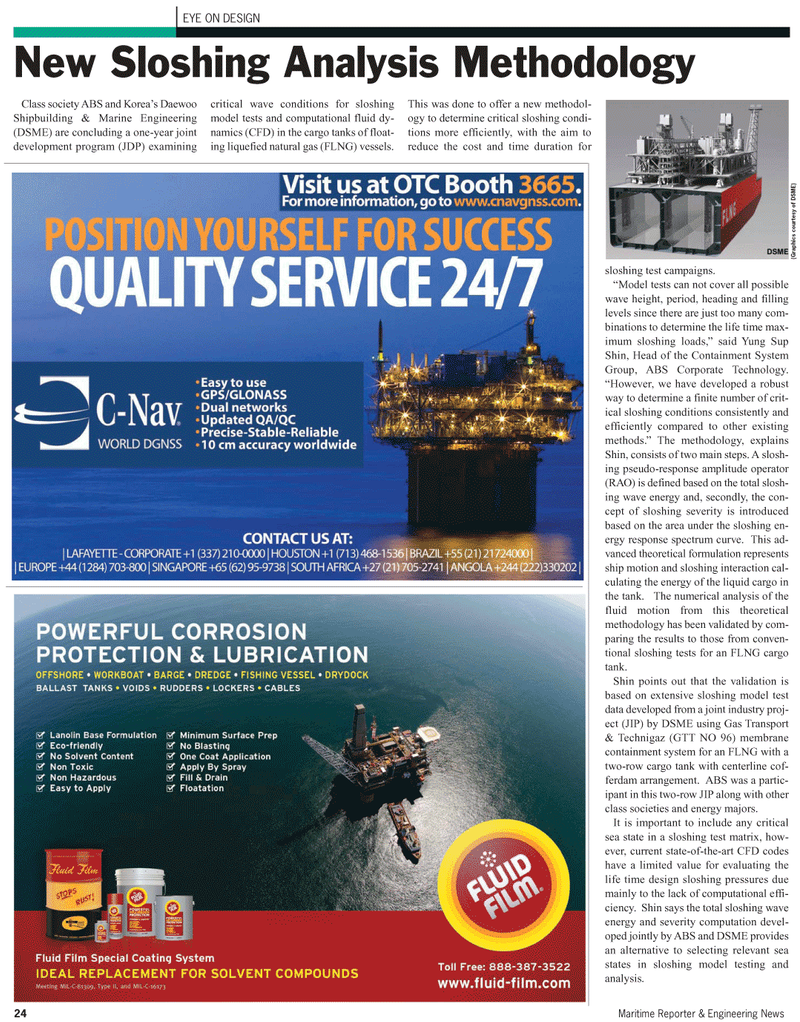
Page 24: of Maritime Reporter Magazine (April 2011)
Offshore Annual
Read this page in Pdf, Flash or Html5 edition of April 2011 Maritime Reporter Magazine
24 Maritime Reporter & Engineering News
EYE ON DESIGN
Class society ABS and Korea’s Daewoo
Shipbuilding & Marine Engineering (DSME) are concluding a one-year joint development program (JDP) examining critical wave conditions for sloshing model tests and computational fluid dy- namics (CFD) in the cargo tanks of float- ing liquefied natural gas (FLNG) vessels.
This was done to offer a new methodol- ogy to determine critical sloshing condi- tions more efficiently, with the aim to reduce the cost and time duration for sloshing test campaigns. “Model tests can not cover all possible wave height, period, heading and filling levels since there are just too many com- binations to determine the life time max- imum sloshing loads,” said Yung Sup
Shin, Head of the Containment System
Group, ABS Corporate Technology. “However, we have developed a robust way to determine a finite number of crit- ical sloshing conditions consistently and efficiently compared to other existing methods.” The methodology, explains
Shin, consists of two main steps. A slosh- ing pseudo-response amplitude operator (RAO) is defined based on the total slosh- ing wave energy and, secondly, the con- cept of sloshing severity is introduced based on the area under the sloshing en- ergy response spectrum curve. This ad- vanced theoretical formulation represents ship motion and sloshing interaction cal- culating the energy of the liquid cargo in the tank. The numerical analysis of the fluid motion from this theoretical methodology has been validated by com- paring the results to those from conven- tional sloshing tests for an FLNG cargo tank.
Shin points out that the validation is based on extensive sloshing model test data developed from a joint industry proj- ect (JIP) by DSME using Gas Transport & Technigaz (GTT NO 96) membrane containment system for an FLNG with a two-row cargo tank with centerline cof- ferdam arrangement. ABS was a partic- ipant in this two-row JIP along with other class societies and energy majors.
It is important to include any critical sea state in a sloshing test matrix, how- ever, current state-of-the-art CFD codes have a limited value for evaluating the life time design sloshing pressures due mainly to the lack of computational effi- ciency. Shin says the total sloshing wave energy and severity computation devel- oped jointly by ABS and DSME provides an alternative to selecting relevant sea states in sloshing model testing and analysis.
New Sloshing Analysis Methodology (Graphics cour tesy of DSME)

 23
23

 25
25
